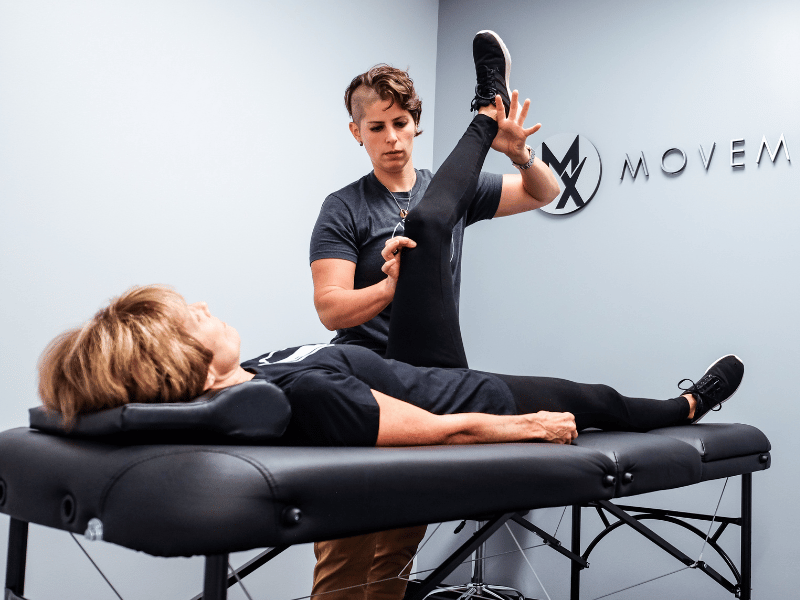Plantar fasciitis is a common condition that affects many people, causing pain and discomfort in the heel and bottom of the foot. It is estimated that plantar fasciitis accounts for 1 million patient care visits annually in the United States [1].
This condition can significantly impact your daily activities and quality of life. However, while plantar fasciitis can be frustrating to endure, the good news is that with the right treatment and care, it can be effectively managed.
By familiarizing ourselves with the causes and symptoms and embracing preventive measures, we can take significant steps towards reducing the impact of plantar fasciitis on our daily lives and maintaining optimal foot health.
So, let us embark on this journey of understanding plantar fasciitis and empower ourselves with the knowledge to tackle this common foot ailment effectively.
What is Plantar Fasciitis?
Plantar fasciitis is a common and often painful condition that affects the thick band of tissue (fascia) connecting the heel bone to the toes. This fascia supports the arch of the foot and acts as a shock absorber.
When strained or overused, it can become inflamed, leading to a stabbing pain near the heel, especially with the first steps in the morning or after prolonged sitting. This condition is the most prevalent cause of heel pain in adults and can significantly impact daily activities and quality of life.
Symptoms of Plantar Fasciitis
Plantar fasciitis is characterized by discomfort and pain in the heel or arch of the foot. Symptoms can vary in intensity and may develop gradually or appear suddenly. Recognizing the signs of plantar fasciitis is crucial for early intervention and appropriate management. Here are the key symptoms to look out for:
1. Heel Pain: The most prominent symptom of plantar fasciitis is sharp pain in the bottom of the heel. This pain is often described as a stabbing sensation, which tends to be more pronounced after periods of rest, such as waking up in the morning or after sitting for an extended time. The discomfort is attributed to the tightening of the plantar fascia during inactivity.
2. Arch Pain: In addition to heel pain, some individuals may experience discomfort in the arch of the foot. The pain is typically localized near the point where the plantar fascia inserts into the heel bone (calcaneus) and may radiate along the arch.
3. Stiffness: People with plantar fasciitis often report stiffness and a feeling of tightness in the bottom of the foot, especially after periods of rest. This stiffness can lessen with activity as the tissues warm up.
4. Pain with Activity: The pain associated with plantar fasciitis tends to subside during periods of activity or walking. However, as the condition progresses, pain can become more persistent and affect daily movements.
5. Painful First Steps: The initial steps taken after waking up or after long periods of inactivity can be particularly painful. This phenomenon, known as “post-static dyskinesia,” is a hallmark sign of plantar fasciitis.
6. Pain Aggravated by Certain Activities: Activities that place significant stress on the feet, such as running, jumping, or prolonged standing, can exacerbate the pain and discomfort associated with plantar fasciitis.
7. Redness and Swelling: While less common, some individuals may experience mild swelling and redness in the affected area around the heel or bottom of the foot.
It is essential to note that these symptoms may not be exclusive to plantar fasciitis and could be indicative of other foot conditions. Therefore, consulting a physical therapist or podiatrist for an accurate diagnosis is vital for effective treatment.
Causes of Plantar Fasciitis
Plantar fasciitis arises from the inflammation and irritation of the plantar fascia, a thick band of tissue that connects the heel bone to the toes and supports the foot’s arch. While the exact cause of plantar fasciitis can vary among individuals, it is often the result of a combination of factors.
Understanding these underlying causes can help us adopt preventive measures and make informed decisions about treatment options. Some of the primary factors contributing to the development of plantar fasciitis include:
1. Overuse and Repetitive Stress: Engaging in activities that place excessive stress on the feet, such as running, dancing, or jumping, without adequate rest and recovery, can strain the plantar fascia, leading to microtears and inflammation.
2. Poor Foot Mechanics: Abnormal foot mechanics, such as flat feet (overpronation) or high arches (supination), can cause an uneven distribution of weight and impact on the plantar fascia, increasing the risk of injury.
3. Footwear Choices: Wearing ill-fitting shoes, particularly those with inadequate arch support or cushioning, can exacerbate the strain on the plantar fascia and contribute to the development of plantar fasciitis.
4. Weight Gain and Obesity: Excess body weight places additional stress on the feet and can overload the plantar fascia, increasing the likelihood of inflammation and pain.
5. Age and Physical Activity: Plantar fasciitis is more common in individuals between the ages of 40 and 60. Moreover, sudden increases in physical activity or a change in exercise routines can also trigger the condition.
6. Occupational Factors: Professions that involve prolonged standing or walking on hard surfaces can strain the plantar fascia over time, leading to the development of plantar fasciitis.
7. Tight Calf Muscles: Tightness in the calf muscles can alter the mechanics of the foot and put additional stress on the plantar fascia.
8. Inadequate Foot Support: Insufficient arch support or inappropriate footwear during physical activities can lead to poor foot alignment and increased stress on the plantar fascia.
9. Other Medical Conditions: Individuals with certain medical conditions, like rheumatoid arthritis or ankylosing spondylitis, may be more susceptible to plantar fasciitis due to inflammation and autoimmune responses.
Treatment Options for Plantar Fasciitis
Managing plantar fasciitis involves a comprehensive approach that aims to alleviate pain, reduce inflammation, and facilitate healing of the affected plantar fascia. The most effective treatment strategy for your specific case may vary depending on the severity of the condition, individual factors, and the specific contributing causes. Here are some common treatment options used to address plantar fasciitis:
1. Rest and Ice: Giving the foot adequate rest is crucial to allow the inflamed tissues to heal. Applying ice to the affected area for 15-20 minutes several times a day can help reduce inflammation and provide pain relief.
2. Stretching Exercises: Regular stretching exercises for the calf muscles and Achilles tendon can help alleviate tension on the plantar fascia. Simple exercises like calf stretches against a wall or using a towel to stretch the foot can be beneficial.
3. Footwear and Lifestyle Modifications: Choosing supportive and cushioned shoes with proper arch support is essential for proper foot mechanics. Also, maintaining a healthy weight and avoiding activities that exacerbate symptoms can help promote healing and prevent recurrence.
4. Physical Therapy: A physical therapist can develop a tailored exercise program to strengthen the foot muscles, improve flexibility, and address any gait abnormalities contributing to the condition. We’ll expand upon this in the next section.
5. Night Splints: Wearing night splints may help keep the plantar fascia stretched while sleeping, reducing morning pain and stiffness.
6. Medications: Over-the-counter nonsteroidal anti-inflammatory drugs (NSAIDs), such as ibuprofen, may help reduce pain and inflammation. Always talk to your physician before considering a medication approach.
7. Corticosteroid Injections: In cases of severe pain, corticosteroid injections may be administered to reduce inflammation. However, these are typically reserved for short-term relief due to potential side effects.
8. Topical Treatments: Some topical treatments, such as creams or gels containing anti-inflammatory agents, can provide localized relief.
9. Taping or Bracing: Taping the foot or wearing a brace can offer temporary support and reduce stress on the plantar fascia.
Surgery is typically considered only as a last resort and is reserved for cases where conservative treatments have not provided relief. Surgical procedures may involve releasing the tension on the plantar fascia or removing damaged tissue.
It is important to note that each individual may respond differently to various treatment approaches. Therefore, a personalized treatment plan, in consultation with a physical therapist or a podiatrist, is essential to effectively manage plantar fasciitis.
How Physical Therapy can help with Plantar Fasciitis
Physical therapy can help manage or treat plantar fasciitis effectively. It includes specific exercises to stretch and strengthen your muscles, which can help relieve your pain and prevent further injury. Both strengthening and stretching exercise programs have been shown to significantly reduce pain and improve gait in patients with plantar fasciitis [3].
At MovementX, our physical therapists use a combination of hands-on manual therapy, therapeutic exercise, and self-mobilizations as part of an effective and comprehensive treatment plan [1].
Our Top Exercises & Stretches for Plantar Fasciitis
Incorporating specific exercises into your daily routine can play a vital role in managing and preventing plantar fasciitis. These exercises aim to strengthen the foot muscles, improve flexibility, and alleviate tension on the plantar fascia. However, it is essential to perform these exercises correctly and gradually increase intensity to avoid exacerbating the condition. Here are some beneficial exercises for plantar fasciitis:
1. Calf Stretch Against a Wall: Stand facing a wall with one foot forward and the other foot back. Keep your back leg straight and bend your front knee. Press your hands against the wall and lean forward, stretching the calf muscle of the back leg. Hold for 30 seconds and switch legs. Perform this stretch several times a day.
2. Plantar Fascia Stretch: Sit with one leg extended straight out in front of you. Loop a towel around the ball of your foot and gently pull the towel towards you while keeping your leg straight. You should feel a stretch along the bottom of your foot and calf. Hold for 30 seconds and repeat on the other foot.
3. Rolling a Frozen Water Bottle: Freeze a water bottle and place it on the floor. While seated, roll the arch of your foot over the frozen bottle for a few minutes. This can help reduce inflammation and provide relief.
4. Towel Scrunches: Place a small towel on the floor and use your toes to scrunch it towards you. Repeat this movement several times to strengthen the muscles in your feet.
5. Calf Raises: Stand with your feet hip-width apart. Rise up onto your toes, lifting your heels off the ground, then slowly lower back down. Repeat this exercise for several sets.
Remember to perform these exercises at a comfortable level and avoid overstretching or overexertion. If you experience severe pain during any exercise, stop immediately and consult with a physical therapist.
By incorporating these exercises into your daily routine and complementing them with other preventive measures, you can enhance foot health, reduce the risk of plantar fasciitis, and promote overall well-being.
Remember to consult with a physical therapist before starting any exercise program.
Prevention of Plantar Fasciitis
Preventing plantar fasciitis involves maintaining a healthy weight, choosing supportive shoes, and avoiding high-impact activities. Regularly stretching your arches and calves can also help!
Conclusion
Plantar fasciitis can be a painful and debilitating condition, but with the right treatment and care, it can be effectively managed. If you’re struggling with plantar fasciitis, consider scheduling a session with MovementX. Our expert physical therapists are here to help you get back on your feet and live a pain-free life.
References
- Fraser JJ, Glaviano NR, Hertel J. Utilization of Physical Therapy Intervention Among Patients With Plantar Fasciitis in the United States. J Orthop Sports Phys Ther. 2017;47(2):49-55. doi:10.2519/jospt.2017.6999. Available at: https://www.jospt.org/doi/10.2519/jospt.2017.6999.
- Eslamian F, Shakouri SK, Jahanjoo F, Hajialiloo M, Notghi F. Extra Corporeal Shock Wave Therapy Versus Local Corticosteroid Injection in the Treatment of Chronic Plantar Fasciitis, a Single Blinded Randomized Clinical Trial. Pain Med. 2016;17(11):2122-2132. doi:10.1093/pm/pnw113. Available at: https://academic.oup.com/painmedicine/article/17/9/1722/2399368.
- Thong-On S, Bovonsunthonchai S, Vachalathiti R, Intiravoranont W, Suwannarat S, Smith RM. Effects of Strengthening and Stretching Exercises on the Temporospatial Gait Parameters in Patients With Plantar Fasciitis: A Randomized Controlled Trial. Ann Rehabil Med. 2019;43(6):662-676. doi:10.5535/arm.2019.43.6.662. Available at: https://www.e-arm.org/journal/view.php?doi=10.5535/arm.2019.43.6.662.
- Akınoğlu B, Köse N, Kırdı N, Yakut Y. Comparison of the Acute Effect of Radial Shock Wave Therapy and Ultrasound Therapy in the Treatment of Plantar Fasciitis: A Randomized Controlled Study. Pain Med. 2017;18(11):2189-2198. doi:10.1093/pm/pnx113. Available at: https://academic.oup.com/painmedicine/article/18/12/2443/3858110.
Share This Page
More Conditions We Treat
Found this page interesting? Learn more about other conditions we treat:




